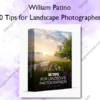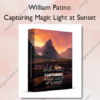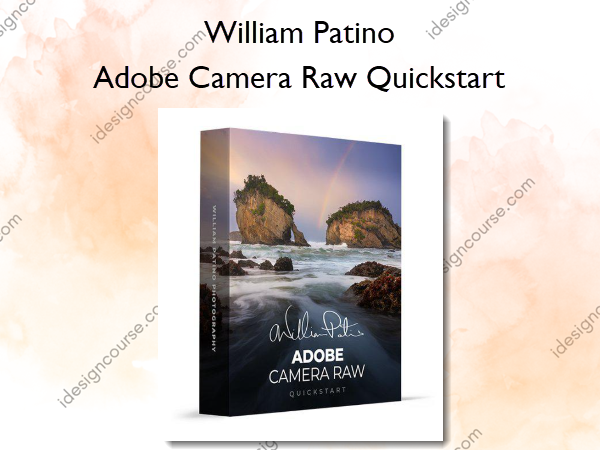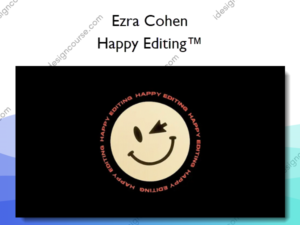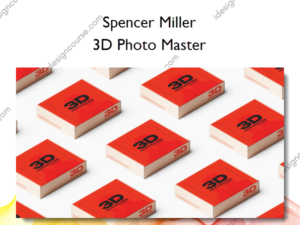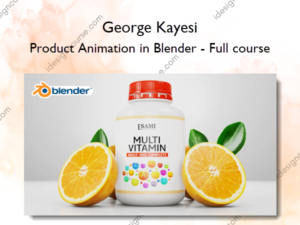Adobe Camera Raw Quickstart – William Patino
$97.00 $19.00
»Delivery: Within 24 hours
Description
 Adobe Camera Raw Quickstart Information
Adobe Camera Raw Quickstart Information
Adobe Camera Raw Quickstart by William Patino is a comprehensive course designed to help photographers effectively edit their raw image files using Adobe Camera Raw.
The best tips & tricks to get real results in editing in Adobe Camera Raw.
Covering a broad range of adjustments, you will learn global and local techniques for isolating areas of an image, cropping, straightening, color manipulation, stitching panoramas, how to save files, contrast, spot removal, and much, much more. This course will give you all you need to know!
This course is for you if…
- You’ve struggled to edit raw files to achieve powerful results.
- You’re unsure how to correct the exposure, light, and colors in an image.
- You’re intimidated by Photoshop and shooting RAW as a result.
What You’ll Learn In Adobe Camera Raw Quickstart?
Introduction To Lesson
In this lesson, Will introduces the course, outlining what’s ahead and things to consider.
Introduction To ACR
A brief overview of the layout and design of Camera Raw, to familiarise you with the set up.
Bit Depth And Smart Objects
Learn how to adjust the bit depth of your raws for editing and also set up to export raw files as smart objects in Photoshop.
Lens Corrections
See how to apply lens corrections for repairing warping and distortion as well as how to remove chromatic aberration and create sublet vignettes.
Exposure Values
Adjust the exposure of your image and understand the various sliders used to manipulate light and dark tones.
Cropping And Straightening
Crop, straighten and repair your images using the crop tool and applying the desired aspect ratio.
Spot Removal
Having dust spots or areas that need removing is common and in this lesson you’ll learn how to use the spot removal tool to fix and remove unwanted blemishes.
Contrast Introduction
In this lesson you will get an overview on what contrast is and what adjusting it will do.
Adjusting Contrast
Adjust contrast to lead the eye through the scene, using the tone curve, whites, blacks and highlights slider.
Introduction To Color
A quick overview on color and why it needs to be adjusted in images.
Color Adjustments
Make effective color adjustments using the camera profile, vibrance and saturation sliders, along with white balance adjustments.
HSL Adjustments
Isolate individual colors and make effective adjustments using the Hue, Luminance and Saturations Sliders (HSL).
Split Toning
Split toning is an effective way to introduce color tone separation between the shadows and highlights. In this lesson, Will demonstrates how to do this and how to create a good transition from fro…
Local Color Adjustments
In this lesson, I will demonstrate how to use the adjustment brush to apply color adjustments to localized areas in the image.
Black And White
Learn how to convert a file into a black and white and adjust tonal ranges for specific converted colors.
Monochromes
Some images work better as a monotone, than a direct black and white. In this lesson, Will shows his technique for creating monochrome images.
Local Adjustments With The Graduated Filter
Learn how to make local adjustments and transition the eye within the sky and foreground, using the graduated filter.
Local Adjustments With A Brush
In this lesson, Will demonstrates how to use his favorite tool, the adjustment brush. See how to apply local adjustments to enhance light, atmosphere, detail and effectively lead the eye through a …
Sharpening And Noise
See the effect of the sharpening and noise reduction sliders and how to apply them in ACR.
Stitching Panoramas
Will share how to capture and stitch expansive scenes, using the panorama stitching tool in ACR.
Exporting And Saving
See how to finish up an edit and convert your raw file to a jpeg so you can share your image with the world.
Outro
Will wraps up the course with some final thoughts and suggestions.
More courses from the same author: William Patino
Delivery Policy
When will I receive my course?
You will receive a link to download your course immediately or within 1 to 21 days. It depends on the product you buy, so please read the short description of the product carefully before making a purchase.
How is my course delivered?
We share courses through Google Drive, so once your order is complete, you'll receive an invitation to view the course in your email.
To avoid any delay in delivery, please provide a Google mail and enter your email address correctly in the Checkout Page.
In case you submit a wrong email address, please contact us to resend the course to the correct email.
How do I check status of my order?
Please log in to iDesignCourse account then go to Order Page. You will find all your orders includes number, date, status and total price.
If the status is Processing: Your course is being uploaded. Please be patient and wait for us to complete your order. If your order has multiple courses and one of them has not been updated with the download link, the status of the order is also Processing.
If the status is Completed: Your course is ready for immediate download. Click "VIEW" to view details and download the course.
Where can I find my course?
Once your order is complete, a link to download the course will automatically be sent to your email.
You can also get the download link by logging into your iDesignCourse account then going to Downloads Page.

